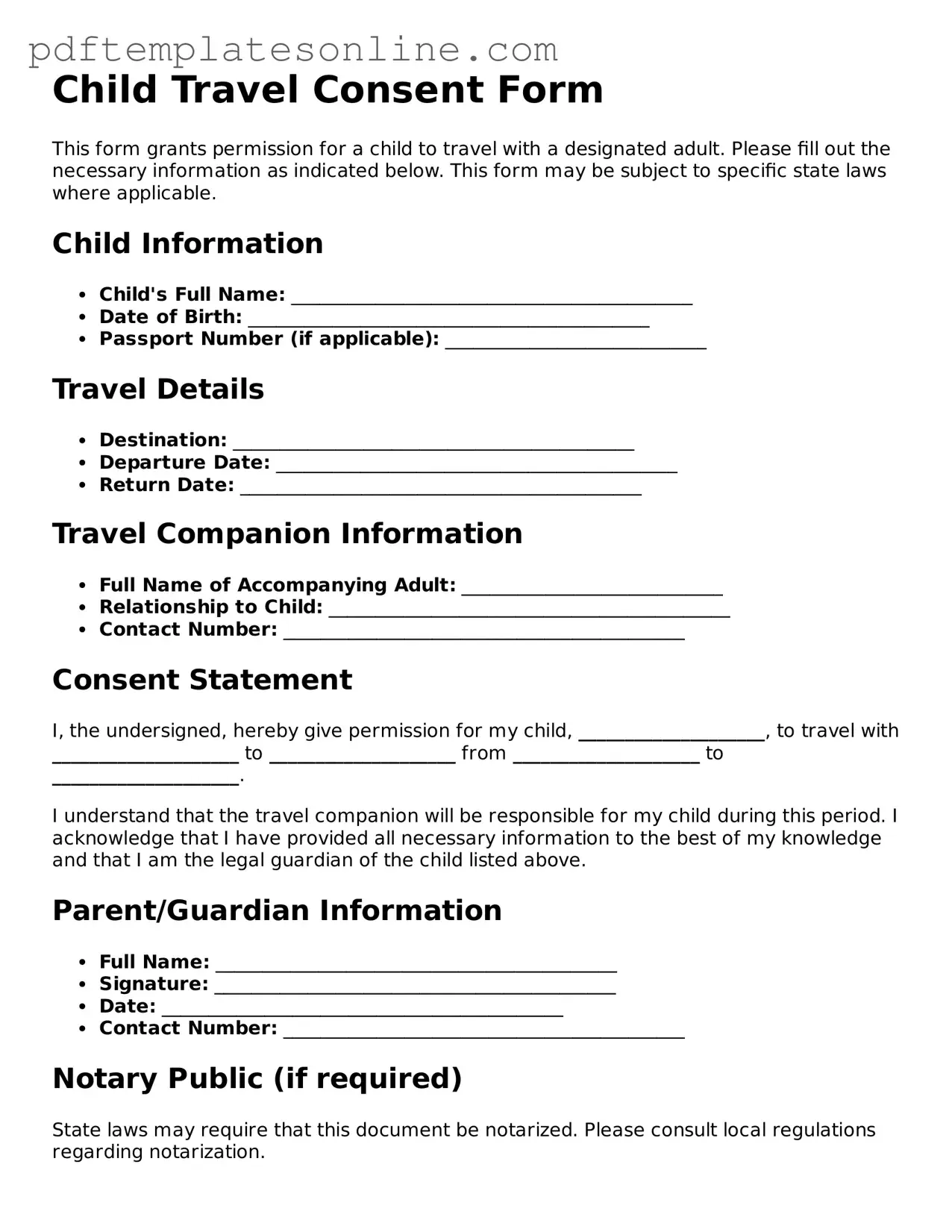Filling out a Child Travel Consent Form can seem straightforward, but many people make common mistakes that can lead to complications. One frequent error is not providing complete information. Each section of the form is crucial, and missing details can cause delays or even prevent travel altogether.
Another common mistake is failing to sign the form. A signature is not just a formality; it is a legal requirement. Without it, the form is not valid, and this oversight can result in significant issues at borders or during travel.
Inaccurate information is also a prevalent issue. Some individuals may mistakenly enter the wrong dates or names. This can create confusion and may lead to questioning by authorities, potentially delaying travel plans.
People often overlook the need for notarization. Many jurisdictions require that the Child Travel Consent Form be notarized to ensure its authenticity. Neglecting this step can render the form ineffective and lead to complications at checkpoints.
Another mistake is not checking the specific requirements of the destination country. Each country may have different regulations regarding child travel. Failing to research these requirements can lead to unexpected challenges during travel.
Additionally, some parents or guardians forget to include contact information for both parties involved in the consent. This information is essential for authorities to reach out if there are any questions or issues during travel.
Not providing a clear itinerary can also be problematic. A detailed travel plan helps clarify the purpose of the trip and can ease concerns from border officials. Without it, the form may raise more questions than it answers.
People sometimes use outdated forms. Regulations change, and using an old version of the Child Travel Consent Form can lead to complications. Always ensure you are using the most current form available.
Finally, neglecting to discuss the travel plans with the child can lead to misunderstandings. It’s important that the child knows what to expect and understands the travel process. Clear communication can help ensure a smooth journey.
